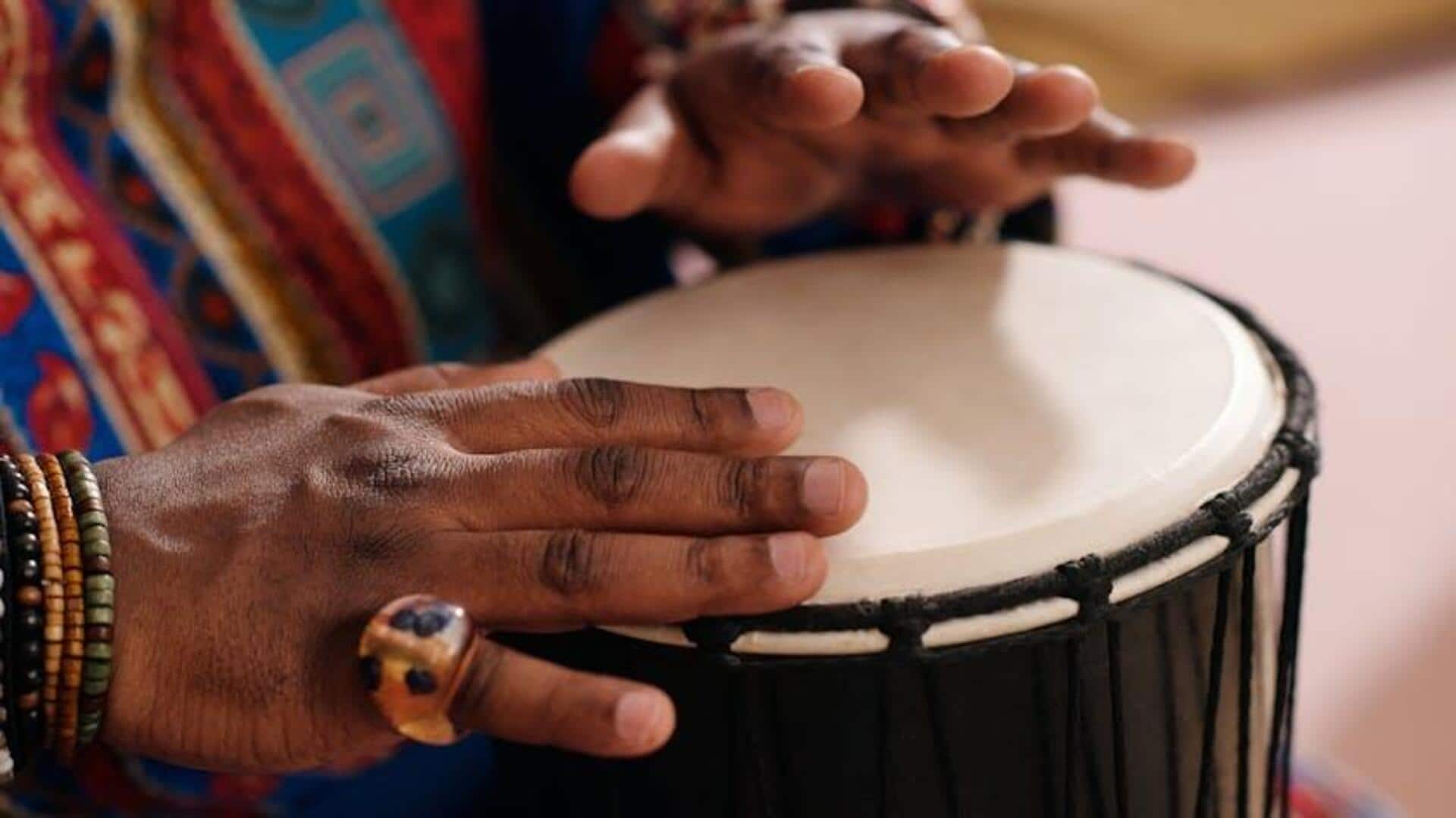
Tone your arms with the power of African drumming
What's the story
Traditional African drumming is not just a powerful musical expression, but also a dynamic workout that specifically targets the arms. This article explores how incorporating African drumming techniques can significantly strengthen your arms. By incorporating these exercises into your daily routine, you can enjoy the rhythmic beats while simultaneously toning your muscles. Hence, improving your physical fitness in a fun and culturally enriching way.
Posture
The basics of drumming posture
The secret to powerful drumming and building muscle at the same time? It's all about posture. Sitting up straight, keeping your back aligned and your shoulders relaxed, not only gives you more control and power when hitting the drums, but it also makes sure you're using your arm muscles to their full potential. This way, you're not just relying on your wrists, and you'll be building strength while you play.
Techniques
Understanding drum techniques
The art of African drumming encompasses a range of hand techniques, including slaps, tones, and bass notes. These techniques demand varying degrees of force and precision, transforming your drumming practice into a dynamic workout for your arms. While slaps will condition your forearm muscles, bass notes will challenge your upper arm with a more vigorous workout.
Rhythms
Incorporating rhythmic patterns
To effectively build arm strength through drumming, introducing complex rhythmic patterns is essential. These patterns will not only test your coordination but also your endurance, resulting in more powerful arms. As you become proficient in playing faster and more complex rhythms, the constant movement and force applied will enhance your muscular endurance in your arms.
Endurance
Building endurance through repetition
Endurance is key to building any muscle group. In African drumming, playing repetitive rhythms or "riffing" for long periods builds serious arm endurance. Begin with shorter sessions of approximately 15 minutes daily, then progressively extend your practice time as your endurance develops. Not only will you become a more skilled musician, but your arm strength will also dramatically improve.
Cross-training
Cross-training with other instruments
While concentrating on traditional drums is great for developing arm strength, including other percussion instruments will give you a more balanced workout by targeting different muscles or utilizing unique movements. Instruments like djembes necessitate specific hand positions compared to congas or bongos, ensuring a holistic approach to muscle building through varied techniques and consistent practice.